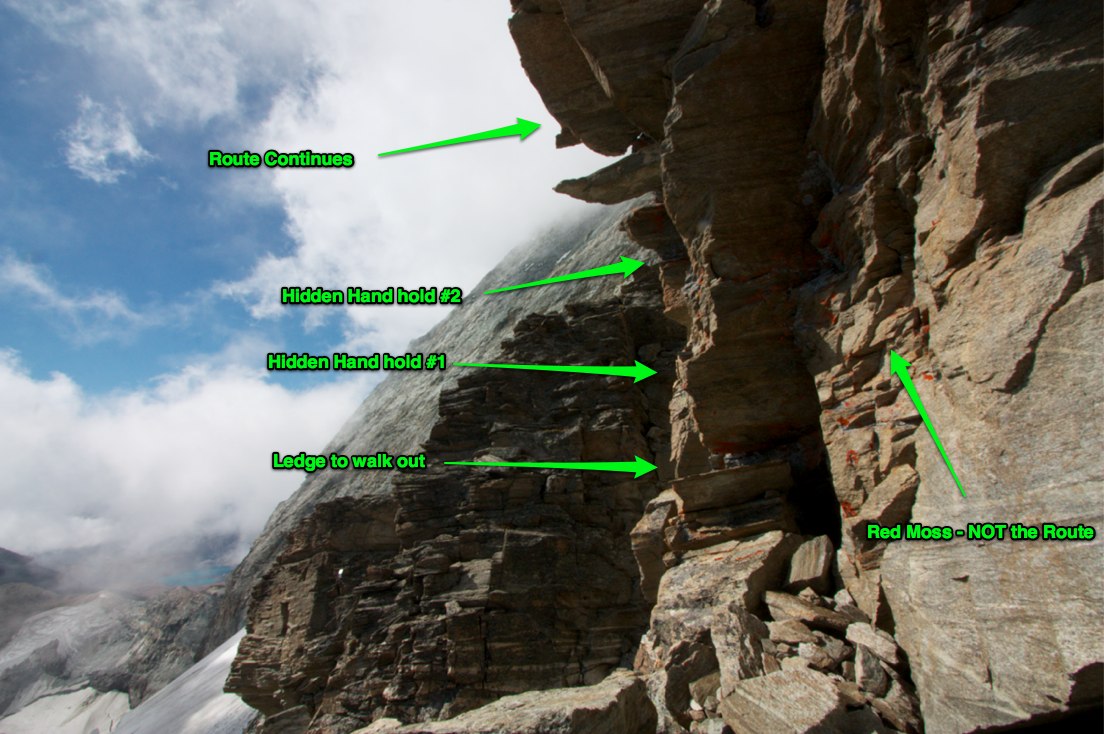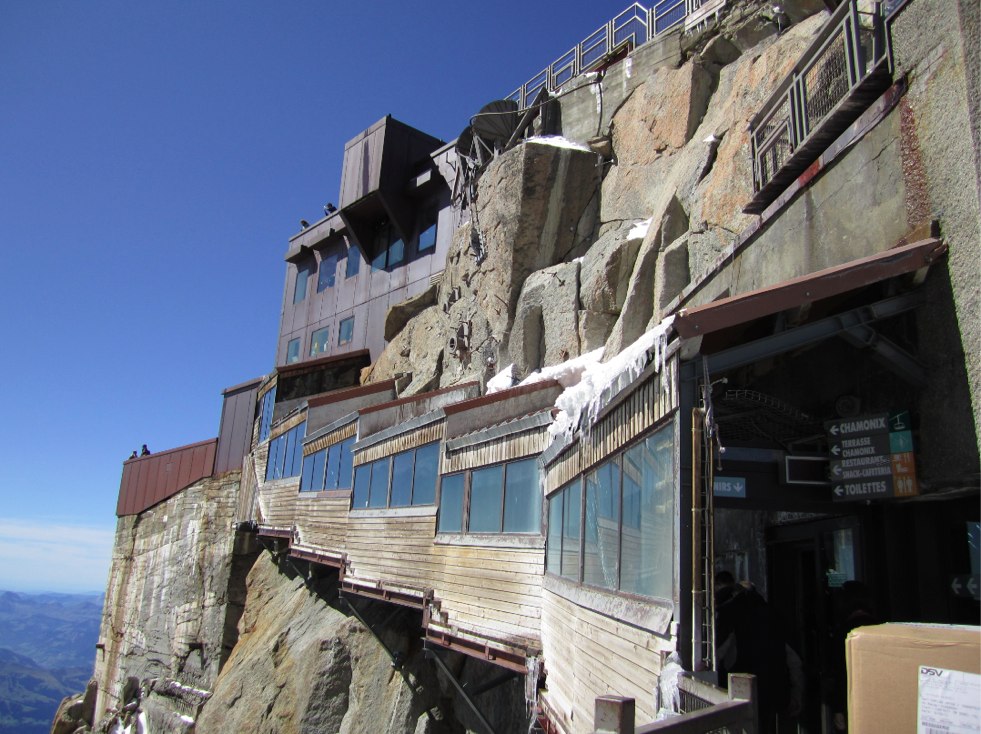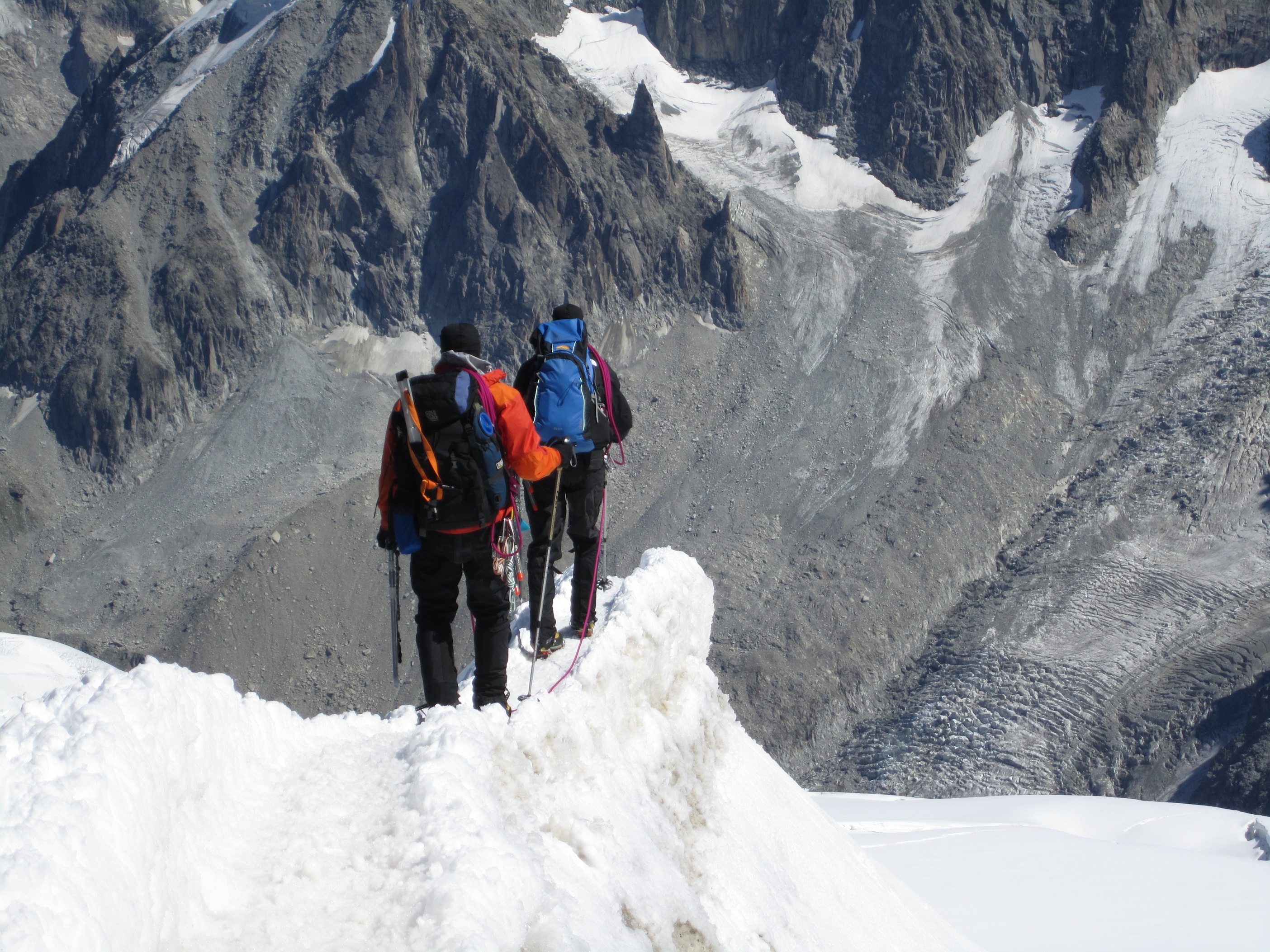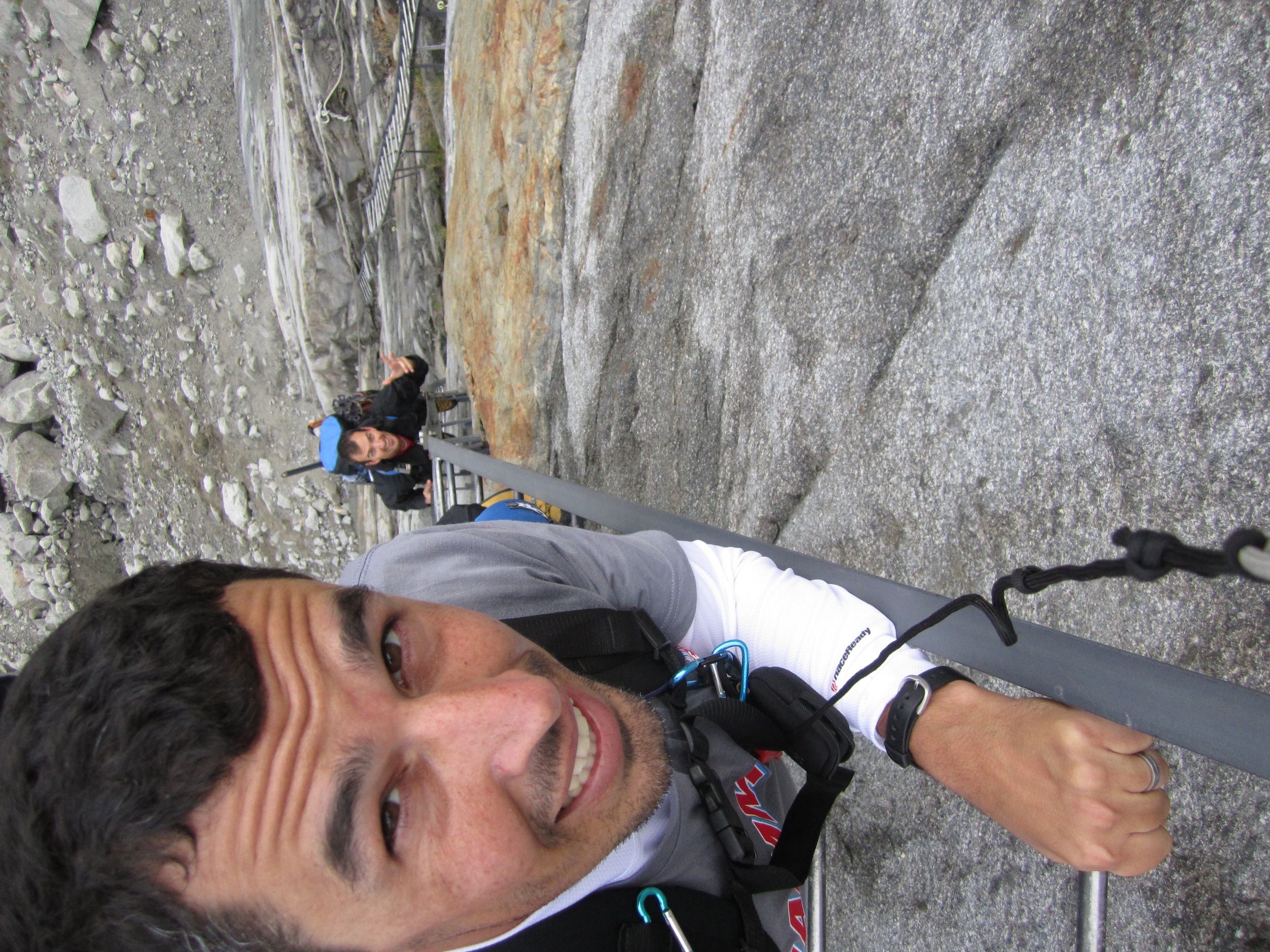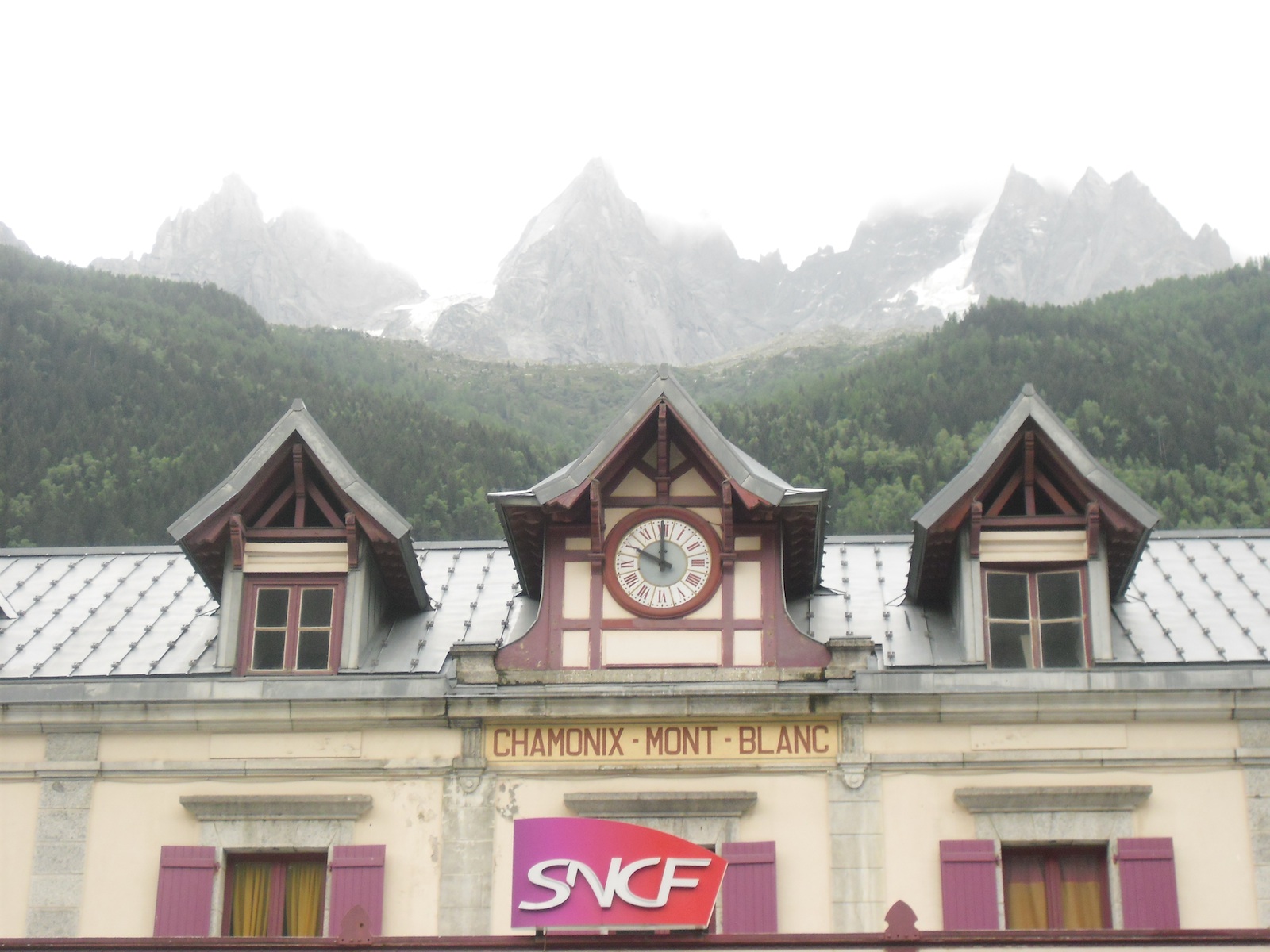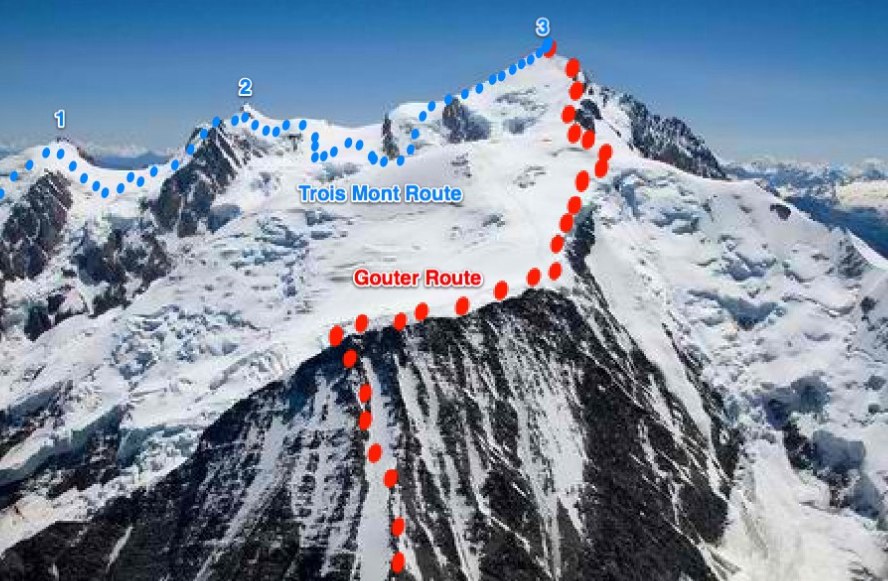Going to bed early was a good idea… But that’s all it was.
Neither Carl or I slept for more than 15 minutes at the Hornli Hutte. We both laid there for 7 hours – but neither of us slept. The refuge was very cold, I was tight from the journey up the hut and while I wasn’t gasping for air, periodic deep breaths through the night were necessary due to the altitude.
Carl and I got up at 4:45 to get a jump on the other climbers. Unfortunately, quite a few others had the same idea.
In addition, The Hornli Hutte has a strange rule: Nobody is allowed to leave the hut until 5:20AM. There was literally a line of climbers and guides standing at the door at 5AM waiting to leave.
While climbing Mont Blanc, the Cosmique Refuge had a reasonable french breakfast (toast, cereal, croissants, nutella, jam and coffee). There was a VERY limited breakfast at the Hornli Hutte. There were 15 tables on the main floor of the hut, but only 6 of them were set with silverware. On each of the 6 tables there was a basket of bread and a jar of jam… no coffee, no tea, no service and 65 climbers. We were almost completely dressed and prepared to leave by 5:15 – but had no sleep and nothing to eat.
While I struggled to come to peace with the idea of many many hours of climbing with no food (we weren’t the first ones downstairs), we had one priority: We NEEDED to follow the group to know where we were going -The single loudest piece of advice we hear: the route is very, very difficult to follow. With a few minutes until the doors opened, we discovered that our brand new rope had been wrapped in a funny way and needed to be re-wrapped. While this only took 2 minutes, it left us leaving the hut behind everyone else… which on this mountain – makes a world of difference.
After fixing the rope, left the hut and had only a guide and his climber directly in front of us – no one else in sight.
As we headed out we zoomed in with Carl’s magical 8Million X zoom and took a picture of Zermatt…
Carl and I moved at the pace of a slow jog to get to the initial ascent. For a first time climber, running up a narrow ridge with nothing but a headlamp and moonlight above you isn’t the most comforting way to start a climb. But in short order we made it to the first wall – a very clearly marked wall with a few supports. Unfortunately this was as comfortable as we would be on this climb. There’s not much to see here, but it’s all we could see ourselves…
During the next 4 hours of the climb we found ourselves off the route at least 6 times. At the top of almost every climb we had to scout out the route and hope that we were following the traveled path. Needless to say, this took a LOT of time – and stopping just once to explore our options left us behind the climbers who knew the route (95% of which had guides). But beyond the amount of time it was taking, being “off route” posed some very serious safety concerns.
The Matterhorn is made up of a tremendous of amount of lose boulders. Unfortunately, good weather on the mountain is a mixed blessing. With rain and snow, these 500 lb boulders tend to hold in place – but the ice is a much greater issue with a steep climb. With better weather, the route itself is safer but being off route amplifies a climber’s exposure to rock slides as the warmer rocks are often just balancing in place. Any lose rocks on the route are moved or worked around as more and more climbers use the Hornli Route each year. A good indicator you are not on route is hand holds and foot holds that move as you pull yourself up the mountain…
A couloir is essentially a funnel on a mountain. All of the loose rock from above end up falling through this passage as it tumbles down the mountain. A scree field is the result of falling rock. It is a collection of all of the lose rock on the mountain – from small rocks to huge boulders. The identifying attribute of the scree field is that none of the rock is stable. Every step is met with a shift in the rock and every time you reach for a handhold, it’s necessary to test how much force can be put on the hold before it moves.
After 45 minutes of navigating our way through the scree field we were completely unclear on which direction to go. We tested 4 different routes, all of which were met with moving rock, shear drops or inverted climbs – none of which seemed to be the correct route. There’s nothing like being lost on a mountain when it looks like the clouds may be moving in…

This pic is from our “guide book” – just to give you an idea of what kind of instructions we were trying to follow…



